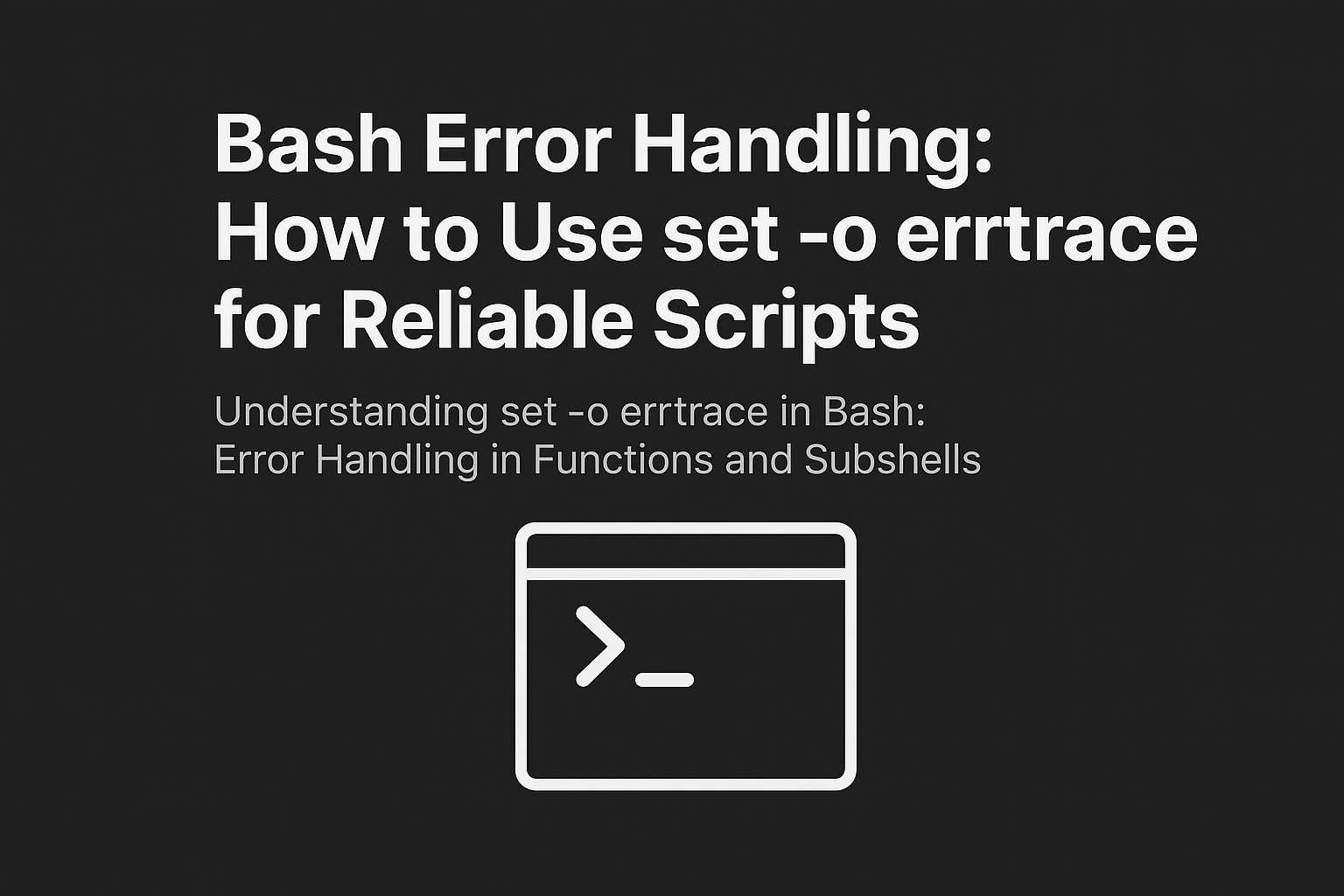Bash Error Handling: How to Use set -o errtrace for Reliable Scripts
admin
diagram Bash Error Hling: How Use set -o errtrace for Reliable Scripts
Bash Error Handling: How to Use set -o errtrace for Reliable Scripts
Understanding set -o errtrace in Bash: Error Handling in Functions and Subshells
When writing reliable and maintainable Bash scripts, especially for automation and DevOps tasks, handling errors effectively is crucial. One underused but powerful Bash option is set -o errtrace, or its shorthand set -E.
In this article, we’ll explore what errtrace does, why it's important, and how to use it to make your shell scripts more robust.

Problem: trap ERR Doesn't Work in Functions by Default
You may know that you can trap errors using:
trap 'echo "An error occurred!"' ERR
But did you know that this trap does not work inside functions or subshells by default?
❌ Example:
trap 'echo "Something went wrong!"' ERR
failing_function() {
false # This command fails
}
failing_function
Expected Output:
Something went wrong!
Actual Output:
(No output — the trap is ignored in the function)
Solution: Use set -o errtrace or set -E
To inherit the ERR trap into functions and subshells, use:
set -o errtrace
# or the shorthand:
set -E
Corrected Example:
set -E
trap 'echo "Something went wrong!"' ERR
failing_function() {
false
}
failing_function
Output:
Something went wrong!
Now the trap works even inside the function!
Combine with Safe Scripting Practices
To write safe and predictable scripts, combine the following:
set -eEuo pipefail
trap 'echo "Error occurred at line $LINENO"' ERR
-
set -e: Exit script on any error -
set -u: Treat unset variables as errors -
set -o pipefail: Catch errors in piped commands -
set -E: InheritERRtraps in functions/subshells
Real-world Use Case
Imagine you’re writing a deployment script:
set -eEuo pipefail
trap 'echo "Deployment failed at line $LINENO"' ERR
deploy() {
echo "Starting deployment..."
false # Simulating a failure
echo "Deployment finished"
}
deploy
Without set -E, the trap wouldn’t run. With it, the error is properly logged and caught.
Conclusion
Using set -o errtrace (or set -E) in your Bash scripts ensures consistent error trapping behavior across functions and subshells. This small addition can make your scripts much more reliable, especially in production or automation pipelines.
Tip: Always test your trap and error handling logic — one small flag can change everything!